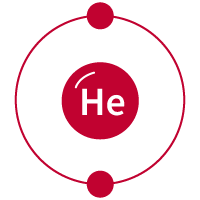Laboratory
Fun Scientific Facts
Mar. 23 2022
Did you know...
| Bananas are radioactive. Here’s a random fact about one of your favorite foods: Bananas contain potassium, and since potassium decays, that makes the yellow fruit slightly radioactive. But don’t worry—you’d need to eat ten million bananas in one sitting to die of banana-induced radiation poisoning. |
|
| Stomach acid is strong enough to dissolve stainless steel. Your stomach digests food thanks to highly corrosive hydrochloric acid with a pH of 2 to 3. This acid also attacks your stomach lining, which protects itself by secreting an alkali bicarbonate solution. The lining still needs to be replaced continually, and it entirely renews itself every four days. |
|
| Helium changes our voice because of its density. Helium is much less dense than oxygen. Typically, we breathe in nitrogen and oxygen. Since helium is less dense than oxygen, the sound of our voice travels faster through our vocal cords. Therefore, helium makes our voice sound weird because the sound is traveling over two times faster than usual. |
|
| If you get exposed to radiation, you need to get naked. One of the weirder yet essential nuclear energy facts: If you get exposed to nuclear substances, the best course of action is to remove all of your clothes. This will remove 90% of the radioactive substance you were exposed to. |
| It is scientifically possible to die from drinking too much water. It’s important to stay hydrated to keep our bodies functioning well. However, too much water can also be fatal. When a dehydrated person drinks too much water without the accompanying electrolytes, they can die from water intoxication and hyponatremia. |
|
| A 5th-grader accidentally created a new molecule in 2012. During a class activity, 10-year-old Clara Lazen presented her teacher with a randomly constructed molecule diagram. Instead of dismissing it, Mr. Kenneth Boer took a photo and sent it to a chemist for analysis. Turns out, it was a new, explosive molecule called Tetranitratoxycarbon. |
|
| Tungsten is the hardest metal. Metals vary in structure and properties. For example, aluminum is lightweight and malleable, while mercury is liquid in form. However, tungsten is the hardest metal known to man. It is used for heavy-duty industries such as space travel and ballistics. |
|
| It can rain diamonds on other planets. The atmospheres in Neptune, Uranus, and Saturn have such extreme pressure that they can crystallize carbon atoms and turn them into diamonds, American Scientist reports. How do we know this science fact? Researchers were able to create the correct conditions in a lab to prove this occurs on Neptune and Uranus. Separately, other researchers speculate that it may rain as much as 2.2 million pounds of diamonds on parts of Saturn every year. |







